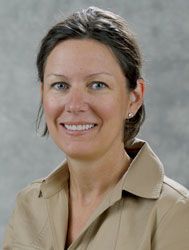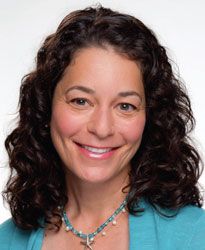Publication
Article
Oncology Nursing News
Survivorship Care Plans: Should Every Patient Have One?
Author(s):
The number of cancer survivors in the United States has quadrupled since 1971, making it imperative for healthcare professionals to identify and address the needs of this burgeoning population.

The number of cancer survivors in the United States has quadrupled since 1971, making it imperative for healthcare professionals to identify and address the needs of this burgeoning population.
“As survival rates improve, cancer patients, whose needs were once totally focused on treatment, now need a way to return to their lives,” said Diva Thielvoldt, RN, MSN, CRNP, the nurse practitioner who manages survivorship plans at the University of Texas Medical Branch in Galveston.
Survivors who think they’re out of the woods medically are often stunned to learn about late effects and long-term effects of some cancer drugs and therapies, including tooth decay, infertility, incontinence, osteoporosis, Hodgkin lymphoma, heart problems, shortness of breath, sexual dysfunction, kidney failure, liver problems, skin sensitivity, hypothyroidism, memory loss, and second primary cancers.
“They are not thinking that’s coming out down the road,” Thielvoldt said. “Ten years down the road, you have this 55-year-old man who is going to go on a date and tell his girlfriend he wears diapers.”
To guide and support patients in their transition to survivorship, cancer treatment programs have started to create survivorship care plans.

Diva Thielvoldt, RN, MSN, CRNP, University of Texas Medical Branch
What Are Survivorship Care Plans?
Survivorship care plans are personal and portable records of patients’ cancer histories bundled with pointers for healthy post-treatment lives.
Survivorship plans, rooted in a 2005 recommendation from the Institute of Medicine, serve as road maps for patients exiting oncology care and settling into life as cancer survivors.
The purpose of the plans is 3-tiered:
- Inform all cancer survivors about essential screenings and recommended lifestyle changes.
- Let patients and primary care providers know about the long-term and late effects of cancers.
- Direct patients to resources they may need to deal with legal, workplace, or psychosocial issues associated with their cancers.

Carolyn Vachani, MSN, RN, AOCN®, LIVESTRONG and Penn Medicine
Bridging the Gap Between Physicians and Patients
Survivorship care plans can be a highly beneficial tool for the millions of survivors who transition to their primary care providers for post-cancer care. A 2009 survey1 showed nearly half of responding primary care providers felt unprepared to evaluate the late effects of adult cancer survivors’ treatments. Further, more than half of the primary care providers in a recent survey2 rated the segue from oncology to primary care as “fair” or “poor.” Most said they were unsure how long testing for recurrence should continue and how frequently it should be performed.
“We’re getting questions from all over the country about long-term effects,” said Carolyn Vachani, MSN, RN, AOCN®, project leader on Penn Medicine’s LIVESTRONG Care Plan. “Unfortunately, when they’re being followed by a primary care physician, the physician may not know that something can be an effect of their treatment. So nobody who is really in tune with long-term effects is watching them.”

Sandhya Pruthi, MD, PhD, Mayo Clinic
“Everybody knows that when you ask patients about the transition to survivorship care they say, ‘Everything is great when I get my treatment, but then I’m sort of left out there,’” said Sandhya Pruthi, MD, PhD, associate professor of medicine at the Mayo Clinic in Rochester, Minnesota, and a researcher with the North Central Cancer Treatment Group in Rochester.
Fifteen percent of primary care physicians say missed care is often or always an issue, according to the Survey of Physician Attitudes Regarding the Care of Cancer Survivors3, and only 42% say it is never an issue.
Survivorship care plans address these concerns by optimizing care coordination among primary care physicians, patients, and oncology care teams. The plans clearly define the roles and responsibilities of the various healthcare professionals and supply each of them with an accurate account of the patient’s cancer history and specific guidelines for follow-up care. The information ensures each caregiver is equipped to optimize patient care during the transition to survivorship and beyond.

Stacie Corcoran, RN, MS, AOCNS®, Memorial Sloan- Kettering Cancer Center
A Perfect Fit With Oncology Nursing
Oncology nurses who have developed survivorship care plans say they fit perfectly with the profession because nurses have always been patient educators.
“Nurses have always been in the lead in empowering their patients. Now even more so,” said Thielvoldt. “Our objective for our patients after treatment is to help them maximize what they have, which is life.”
Nurses are also highly adept at compiling the documents needed to create survivorship care plans. Advanced practice nurses often comb through chicken-scratch records from several hospitals to glean details of tumors and past treatments.
Nurses Perspective

Shell Portner, RN, BSN Nurse Navigator Survivorship Program Coordinator John Muir Cancer Institute Walnut Creek, California
In my cancer center, we developed a survivorship care plan template based on some existing models and configured it to fit the needs of our patients and institution. But with more and more care plan resources now available, it is not necessary to reinvent the wheel.
The American Society of Clinical Oncology has templates for creating care plans that can be printed right off their website, filled in by providers, and then shared with patients.
The American Cancer Society has a care plan builder for patients to complete with the help of their oncology care providers. It gives step-by-step instructions on creating a summary of treatment, as well as assists patients to clarify concerns that are lingering after treatment is over.
The National Cancer Institute has a fact sheet that can assist institutions and healthcare providers create a customized care plan for their patients. The Follow-up Care After Cancer Treatment fact sheet lists the essential information to include in a survivorship care plan.
In my experience as a survivorship nurse navigator, reviewing the care plan can be an overwhelming task for the patient. I find that I am most successful in meeting the needs of my patients when I focus in on their immediate concerns and address these first. I point out in summary all that is included in their care plan, and why this is important for them to have in their records, encouraging them to share their care plans with their primary care physicians. Often, a patient is so consumed with fatigue, pain, fear, and the like that our time is spent working on resolving these issues and making the appropriate referrals. I always remind myself that the goal for our patients is the best possible quality of life after treatment.
“Nurse practitioners are phenomenal in scouring through old charts coming sometimes from multiple institutions,” says Stacie Corcoran, RN, MS, AOCNS®, nurse leader for the survivorship program at Memorial Sloan- Kettering Cancer Center.
Nurses will also look to patients to fill in the information gaps. “Our hope is, going forward, people will get this information at the time they’ve finished treatment, and they’ll have it. There’s a push among patients to kind of take ownership of their own information. There’s less of that ‘Let the doctor handle it,’ [mentality],” according to Vachani.
Feasibility
Although survivorship care plans sound like an instant win-win for patients and providers, only 27% of oncology nurses say their cancer centers provide the plans, according to an Oncology Nursing Society (ONS) survey.4 Insurers do not currently reimburse for the plans, so assembling them drains resources without covering the cost.
“I think if it were reimbursed, it would make it more feasible for practices to get it done,” said Margaret Irwin, RN, MN, PhD, research associate with ONS. “It’s my understanding, from talking to people, that it’s very time-consuming to pull together all of that information. In a very busy practice that is trying to financially survive, that’s a difficulty for them. And, even if it were reimbursed, we still have shortages of doctors and advanced practice nurses. Reimbursing something helps, but it’s not necessarily going to create more people.”
Creating a Survivorship Care Plan
Building a cancer survivorship care plan from scratch is a tall order. You must include specifics—diagnostic tests, tumor site and stage and grade, hormonal status, marker information, treatment dates, surgeries, chemotherapy, radiotherapy, transplants, hormonal therapy, gene therapy, agents used, treatment regimen, dosage, any clinical trials, treatment response, toxicities experienced, plus contact information for providers and treating institutions.
And that’s just the history portion of the plan.
Plans also outline what patients must do to stay healthy and what screenings primary care providers should prescribe. They list the possible long-term and late effects of cancer treatment so patients and providers can recognize them as cancer-connected. Without the backstory, foggy memory due to radiation might throw up red flags about early-onset Alzheimer disease. Resources that deal with the effects cancer treatment could have on relationships, sexual functioning, finances, work, and parenting are also included in the plans.
The plans, which didn’t exist 6 years ago, are being fashioned at cancer centers around the world. Some are 1-page long, while others comprise dozens. A few are universally designed, but many are institution-centric— engineered to sync with the specific facilities electronic records system and tailored to meet the needs of local patients and health professionals.
Diva Thielvoldt, RN, MSN, CRNP, a nurse practitioner in the University of Texas Medical Branch, is fashioning a plan that will work from cities to rural settings, and she hopes to eventually have plans that can be used by survivors whose first language is Spanish or Vietnamese.
Tools and Resources
- NursingCenter.com offers a 1-page plan at http://bit.ly/qAQ1tU.
- The interactive LIVESTRONG plan, developed at the University of Pennsylvania’s Abramson Cancer Center, has been used since 2007. It is available in Spanish and English at www.livestrongcareplan.org. Although it was originally created for use by survivors, a third of its users are healthcare providers. Some supplement it with their own addenda. “We have a lot of smaller community cancer care centers that use it because they don’t have the resources to have a program,” said Carolyn Vachani, MSN, RN, AOCN®, project leader on Penn Medicine’s LIVESTRONG Care Plan. “This is pretty quick and easy to fill out, so they feel, why reinvent the wheel?”
- The Journey Forward plan was created by a coalition of the National Coalition for Cancer Survivorship, the UCLA Cancer Survivorship Center, the Oncology Nursing Society, WellPoint Inc, and Genentech. It takes a cancer-specific approach. Health providers download free software based on ASCO templates, sit with patients, and tailor personal plans for their specific cancers. “The goal was really to have the doctor be more active in working with the patient to create a post-treatment care plan that they can use to deal with all the long-term late effects that may creep up over time,” says Roland King of Journey Forward. For more information, visit http://bit.ly/qrzzCU.
- The Minnesota Cancer Alliance Cancer Survivor Care Plan, a 25-page booklet, is compact enough to be tucked into a purse. It is currently being used at the Mayo Clinic. It can be downloaded for free at http://bit.ly/n7cFY7.
Memorial Sloan-Kettering Cancer Center (MSKCC) built its easy-to-scan plan based on what its patients and providers said works best for them. According to Stacie Corcoran, RN, MS, AOCNS®, nurse leader at MSKCC, busy New York City physicians said the plans should be succinct.
“They want it as concise as possible,” she said. “We’ve heard that if it’s this kind of long report they may not be as inclined to really look at the details of it, so we’ve worked to keep it short but also to include all the vital information. Most patients, I think, find it very helpful. They may not really understand the breakdown of the chemotherapy dosage, but that’s fine. They’ve got the piece that they need to focus on, the preventive practices and screenings. It’s just a practical guide—what do you do moving forward.”
Margaret Irwin, RN, MN, PhD, research associate with the Oncology Nursing Society, predicts plans will morph as new treatments and new late effects surface.
“We don’t know all the long-term and late effects of everything because it’s only been in recent years that we’ve had a large number of cancer survivors,” Irwin said. “As all the treatments develop, there is a delay in understanding the late effects of each treatment. It’s a growing area of practice. As people live longer and as we have more treatments, all of this is just going to become more complex.”
“You almost have to customize your plan based on your practice—private, academic, small multigroup, cancer centers, breast centers,” said Pruthi, who is fashioning a survivorship plan for the Mayo Clinic, which currently uses the Minnesota Cancer Alliance plan. “Everybody’s kind of got to figure out what’s in their communities and what’s available. What survivors want is a coordinated approach and a comprehensive one.”
The LIVESTRONG Example
Treatment facilities lacking the resources to create customized plans can use or refer patients to prepackaged plans. The Minnesota Cancer Alliance plan, the Journey Forward plan, and the LIVESTRONG Care Plan are all available at no cost. Some plans are downloadable, while others require input from a physician.
The LIVESTRONG plan, a 12-page layman’slanguage online tool developed at the University of Pennsylvania’s Abramson Cancer Center in 2007, is used by patients and providers around the world. Patients can go to its host site, Oncolink.org, fill in the blanks, and download a plan.
Vachani, who led the development of the LIVESTRONG plan, said the use of survivorship plans decreases waste and puts some control in the hands of the patient. “The physicians think patients don’t want to know all this stuff, but, in reality, they do. People will often say, ‘This is a lot of information and it can be scary, but it’s important that I have it.’”
Bottom Line
According to Irwin, improving nurses’ capabilities around survivorship is a strong area of interest for ONS, but the effectiveness of survivorship care plans is still unclear.
“One of the major intents of the plans is that the patients have with them whatever information in sufficient detail to work with their primary care physicians. The jury’s out on how well this works,” Irwin said. “Nobody has really studied that yet. It’s a logical thing to fully inform patients, but does that really accomplish the goal? Is the information really shared by the patient with other providers? We don’t really know if these care plans work the way we want them to work. And that’s one of the things insurance companies are going to weigh, along with everything else, for reimbursement purposes.”
References
- Bober SL, Recklitis CJ, Campbell EG, et al. Caring for cancer survivors: a survey of primary care physicians. Cancer. 2009;115(suppl 18):4409-4418.
- Nissen MJ, Beran MS, Lee MW, et al. Views of primary care providers on follow-up care of cancer patients. Fam Med. 2007;39(7):477-482.
- Virgo KS, Lerro CC, Klabunde CN, et al. Barriers in providing breast and colorectal cancer survivorship care: Perceptions of U.S. primary care physicians (PCPs) and medical oncologists (MOs). Presentation at: 46th Annual Meeting of the American Society of Clinical Oncology; June 3-7, 2011; Chicago, IL. Abstract CRA9006.
- Study finds more survivorship programs needed; time and funding present the greatest barriers [news release]. Pittsburgh, PA: Oncology Nursing Society; February 8, 2011. www.ons.org/news.aspx?id=85. Accessed September 20, 2011.









